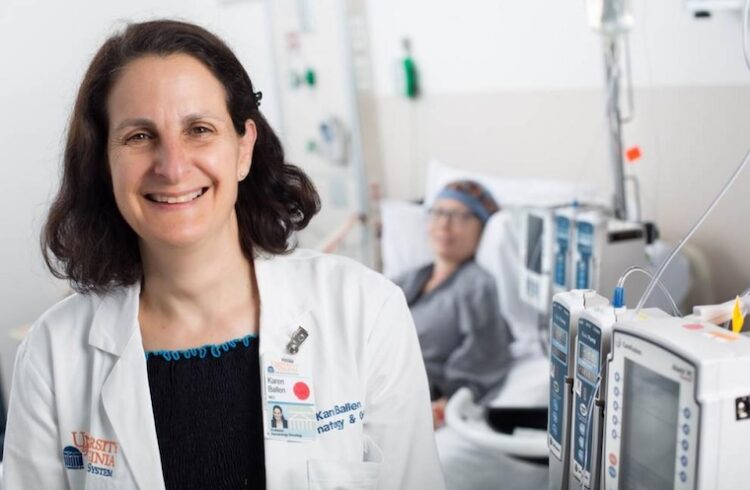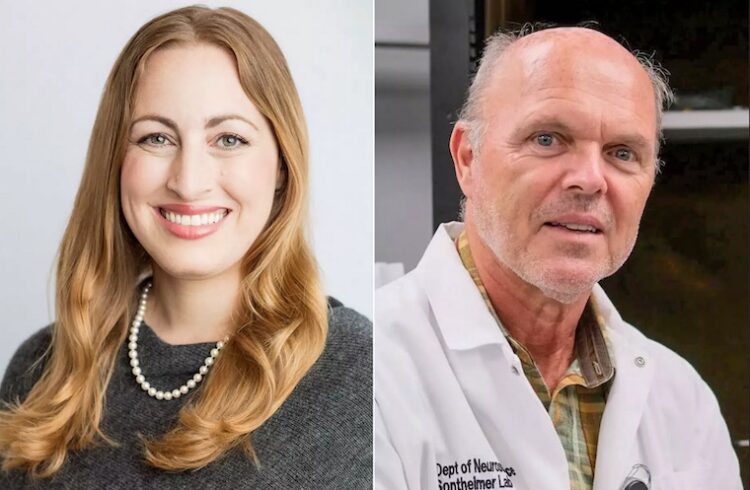
A study published in the September 25, 2008 issue of the New England Journal of Medicine shows that doctors may have an additional 90 minutes to successfully administer clot-busting drugs to patients who suffer the most common type of stroke – an ischemic stroke – which is caused by a blood clot or other blockage within an artery leading to the brain.
Current treatment standards allow doctors to use clot-busters intravenously up to three hours after stroke symptoms begin. The new findings indicate that the drugs can reduce or eliminate effects of a stroke for as long as four and a half hours after onset.
“Our doctors are excited about this news because it suggests that we may be able to save more patients from the devastating consequences of having a stroke,” says Karen C. Johnston, M.D., Chair of the Department of Neurology at the University of Virginia Health System. In addition to being a stroke researcher and educator, Dr. Johnston treats patients in UVA’s Primary Stroke Center, the only facility in central Virginia certified to administer clot-busting drugs, which are also known as tissue plasminogen activators (or tPA).
The U.S. Food and Drug Administration (FDA) first approved tPA in 1987 as a treatment for heart attacks. After clinical trials – many of which were conducted at UVA – the drug gained approval as a treatment for ischemic strokes in 1996. Patients who receive tPA typically experience fewer effects of stroke and reduced permanent disability.
Clot-busters are not used to treat the other leading type of stroke, a hemorrhagic stroke, which is caused by bleeding in the brain.
While study findings suggest that doctors may have a little more time to treat some strokes, Dr. Johnston says they do not change the need to act quickly whenever stroke symptoms start. “If you or a loved one experiences stroke symptoms, call 911 and get to the hospital as fast as possible,” she advises. “Doctors must evaluate a patient quickly to determine if they are having a bleeding or non bleeding stroke and to determine the best treatment. Remember, quick treatment can mean the difference between life and death, between recovery and disability.”
Stroke symptoms often develop suddenly and include sagging muscles on one side of the face (which may look like a crooked smile), weakness in one arm or leg, or trouble talking.
The UVA Health System has been certified by the Joint Commission for Primary Stroke Centers since 2005. It qualified for this designation by demonstrating that it had the staffing, infrastructure and programs to provide high-quality care in stabilizing and treating stroke patients. The UVA Primary Stroke Center cares for nearly 500 patients annually and offers all FDA approved therapies as well as advanced stroke imaging, interventional neuroradiology procedures, and investigational medical and surgical therapies on a 24-hour, seven-day a week basis.
“We’ve built a multi-disciplinary stroke team that is offering the best current treatments, researching new treatments and pioneering new procedures. We now meet an even higher level of criteria to be classified as a Comprehensive Stroke Center (CSC), and look forward to receiving this certification as soon as it is available,” Dr. Johnston says. As envisioned, CSC certification will identify the centers that offer more extensive specialized care and technological resources than Primary Stroke Centers.
Related link:
New England Journal of Medicine study, Thrombolysis with Alteplase 3 to 4.5 Hours after Acute Ischemic Stroke : http://content.nejm.org/cgi/content/full/359/13/1317


